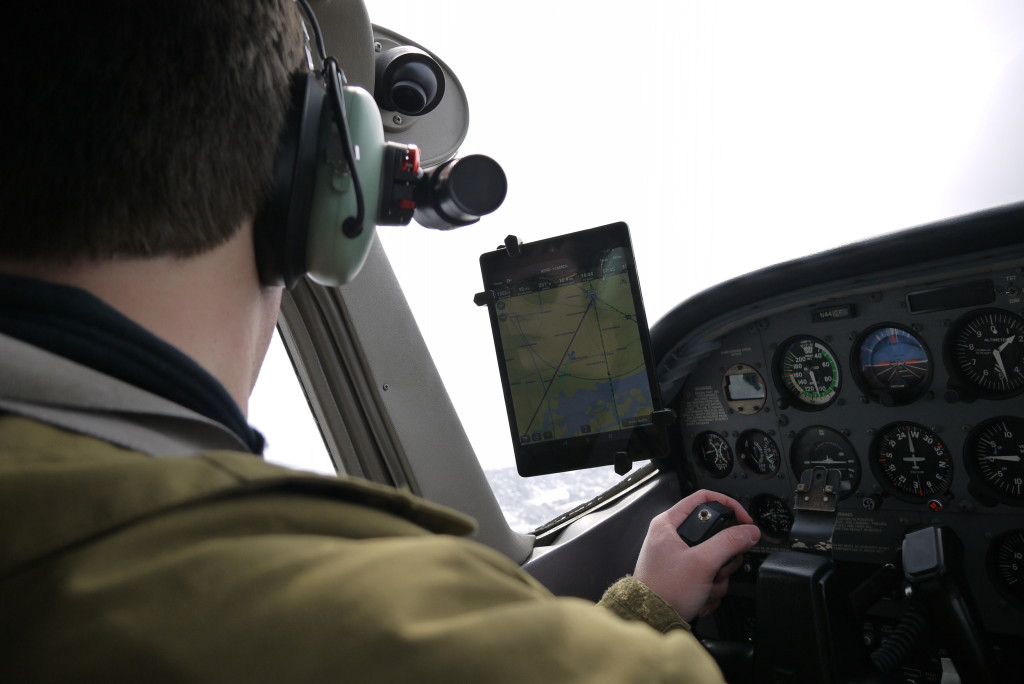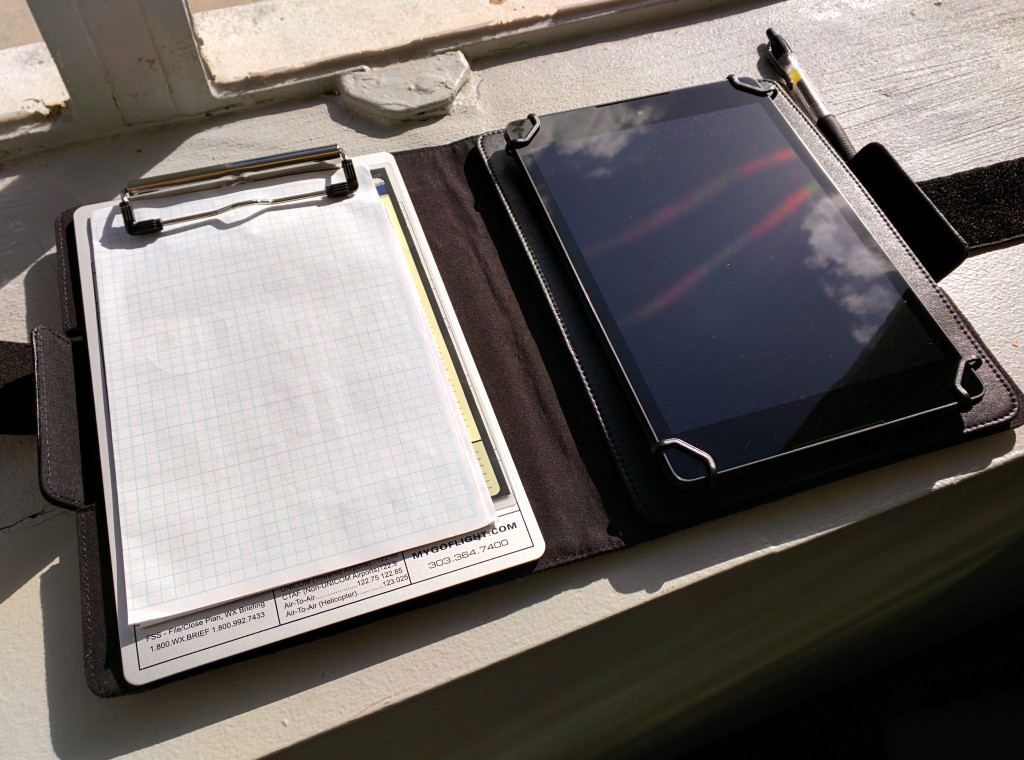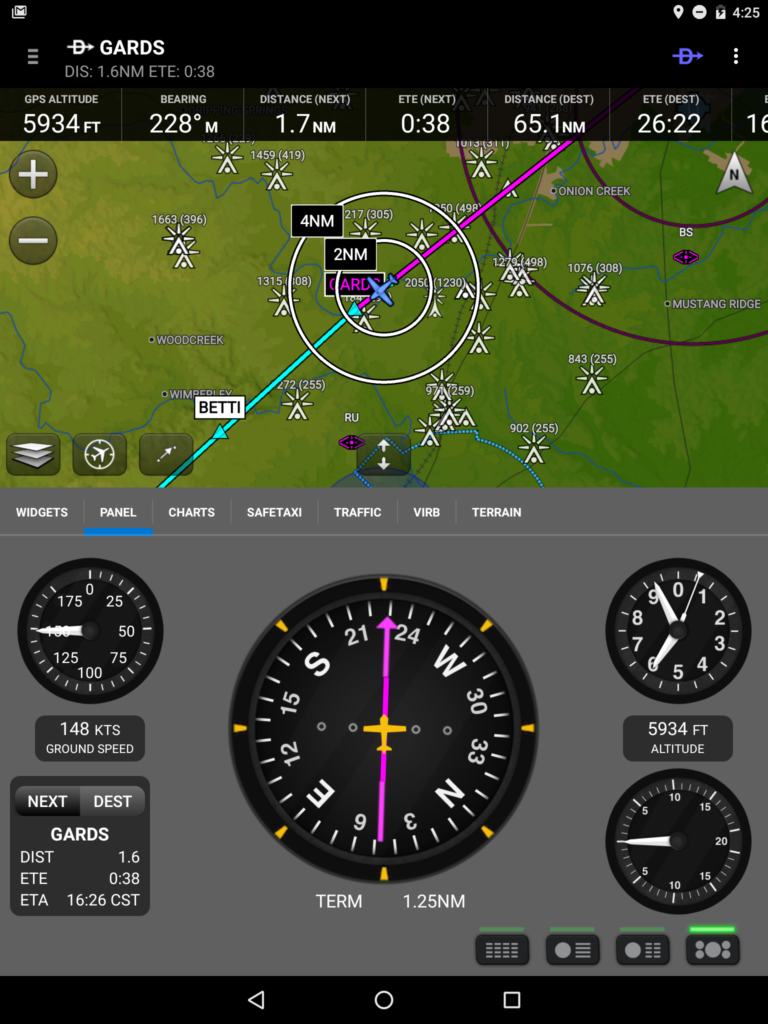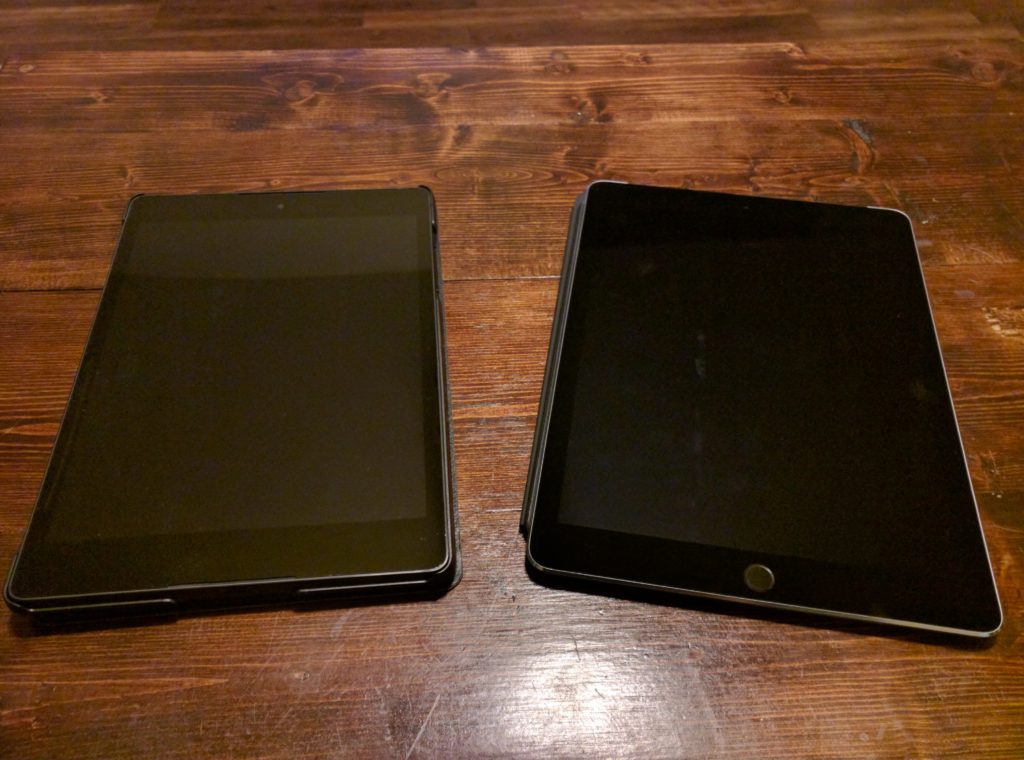I haven’t been flying very long, but over my short life in aviation I’ve watched as tablets and their aviation apps have exploded in popularity. When I started flight school the older pilots regarded my Garmin Pilot enabled Android tablet as not much better than a shiny toy, but these days even the crustiest of the old guard have begrudgingly accepted that a good electronic flight bag (EFB) might be the single mot important piece of safety equipment that a pilot can bring with them in the air. For those who haven’t made the jump and invested in an EFB just yet, there’s a choice to be made which can have a massive impact on their experience and the capabilities of their device: should you get an Android or Apple iOS tablet?
I’ve used both an Android tablet (in the form of a Nexus 9) and an Apple iOS tablet (Apple iPad Air 2), and I’d like to take some time to break down the differences between the two and which one is the best in my opinion.
Stability
The single most important thing needed from any EFB is a stable platform. Even the greatest pilot app is useless if the device won’t function 100% of the time.
In general, the Android tablets have been relatively stable. The only major issue I experienced on Android was during an upgrade to my Nexus 9 which “bricked” the device and forced me to send it back to the manufacturer, something that can be a huge issue if you update your device just before a big flight and no longer have a functioning tablet.
I did experience one time when the tablet silently failed. I was on an IFR flight plan flying cross country last year, and according to my tablet everything was going fine. That is, until I saw my CDI do the TO/FROM flip when the tablet still depicted me a few miles from the VOR station. The Garmin Pilot app had crashed and stopped updating. I was able to continue navigating the airway just fine, but getting the app working again required me to reboot my tablet while in flight.
Some of that stability issue comes from the fact that Android has historically been the redheaded stepchild of the EFB market. Developers regularly code for the Apple iPad and then port their code over to the Android system when they have time. As a result the code doesn’t run quite as well on the device.
The Apple iPad, on the other hand, offers superior stability. The device and code is so stable that the FAA has begun allowing commercial operators to use the tablet as a replacement for paper charts.
Interoperability
People tend to want to stick with what they know and I’m no exception. The latest numbers show that Android is dominating the smartphone market with 61.9% of the market share. It makes sense for someone who already has an Android smartphone to also want to use an Android tablet. It makes using the tablet for other functions much easier (all your apps that you bought for your smartphone work just fine on your Android tablet) and seems like a logical choice.
I bought into that idea at first. Having recently swapped over to an Apple iPad I now see that it isn’t so much of a big deal.
The majority of my work is done on cloud based services. I use Gmail for my email, Dropbox for my file management, and even Google Drive for most of my personal documents. All of these services are device agnostic, meaning that you can swap from one operating system to another and not lose any functionality. For some of the apps I use (like TakeOff) I needed to buy it twice (once on Android and once on iOS) which is annoying, but the majority of services worked on both platforms without a hiccup.
Pilot App Availability and Quality
Speaking of apps, there’s definitely a difference between the two operating systems when it comes to aviation apps and their availability. Let me break it down a little bit further by discussing the leading apps in this market and how they work on the different operating systems.
Garmin Pilot
I absolutely love Garmin Pilot. Garmin has been in the aviation navigation space for quite some time and that experience shows in their app. That said, they do treat the two platforms very differently. Garmin develops their app primarily for the Apple / iOS platform, launching the latest features on iOS first and then translating them to the Android platform as time allows. As it currently stands the Android version of Garmin Pilot is missing some key features, such as the flight profile view for flight planning and the “synthetic vision” feature when paired with a GDL 39 3D.
One other thing: the Android version of Garmin Pilot only offers U.S. charts and navigation information. Flying to Mexico or Canada? Better invest in some paper charts!
There also seems to be some significant performance differences between the Android and iOS versions of Garmin Pilot. The time it takes to launch the application, as well as perform any number of tasks within the program, is vastly shorter on the iOS version. The graphics are better on iOS as well.
ForeFlight
When it comes to Garmin Pilot’s primary competition (ForeFlight) the choice is clear. There is no Android version, only an iOS version available at this time. Many people have asked for an Android port of the program, and while ForeFlight seems open to the idea they still have yet to release a functioning version of their software for those devices.
In short, while there are some EFB options for Android the iOS operating system provides a much broader selection and better functionality for existing programs.
Device Cost
The #1 reason why most people will go with an Android device over Apple iOS is interoperability with their existing smart phone. The #2 reason is that Android devices are less expensive.
Google makes their Android operating system available to manufacturers to place into their own devices which opens up the market and keeps prices low. When I purchased my Nexus 9 I paid just shy of $480. Comparable tablets can be had these days for as little as $70, averaging about $100 and topping out at $400. These tablets include all the memory needed for local storage of charts, a built-in GPS for position information, and more. Competition has forced manufacturers to continuously improve their devices and it has definitely worked in the consumer’s favor.
Apple on the other hand is the sole manufacturer of iOS based devices and can price their devices however they like. What’s worse is that since Apple is the sole manufacturer they also control the specifications for the equipment at each level. As a result Apple has made a decision that an internal GPS sensor will only be provided with the 4G models of their tablets — a $130 price increase over the base model. In short, for the consumer to buy something with similar specs to my $480 Android tablet they would need to shell out $629 to Apple. That might not be a huge hurdle, but it is plenty high enough to deter some shoppers.
Conclusion
When I started this journey I was solidly entrenched in the Android camp. I believed that even with the crippled version of Garmin Pilot that I had available to me I would be able to get by and do everything I needed in the air. Then one day I wanted to take my little Cherokee for a short taco run to Mexico and quickly realized that my technology wasn’t up to the task.
Going down the Apple iOS route might be a more expensive investment up front, but given the way that the pilot software is developed that really remains the best option for pilots these days. The hardware is better, the applications are better, and the stability is greatly improved.
In short, my advice for those trying to make the decision on which path to take is this: buy once cry once. Get an iPad Air 2. Even if you are a hardcore Android fan the fact remains that it just works better in the air.
Products:




Enjoy reading your articles Nick..
Had to chuckle reading your “only major issue” with your Nexus 9 was when it “bricked” when you attempted an upgrade. Stability issues aren’t just for Android devices. I’ve been without my iPad 2 / ForeFlight EFB for about a week.
I was advised by ForeFlight support to upgrade my iOS if I wanted to retain full functionality of my EFB. So I attempted the iOS upgrade and…. yup, you guessed it…
Bricked!!!
Apple online support so far has been less than helpful. Am currently debating whether to do as you had to do with your Nexus and ship it off for repair, or, invest in a nice shiny new Android tablet and switch to Garmin Pilot.
Fly safe!